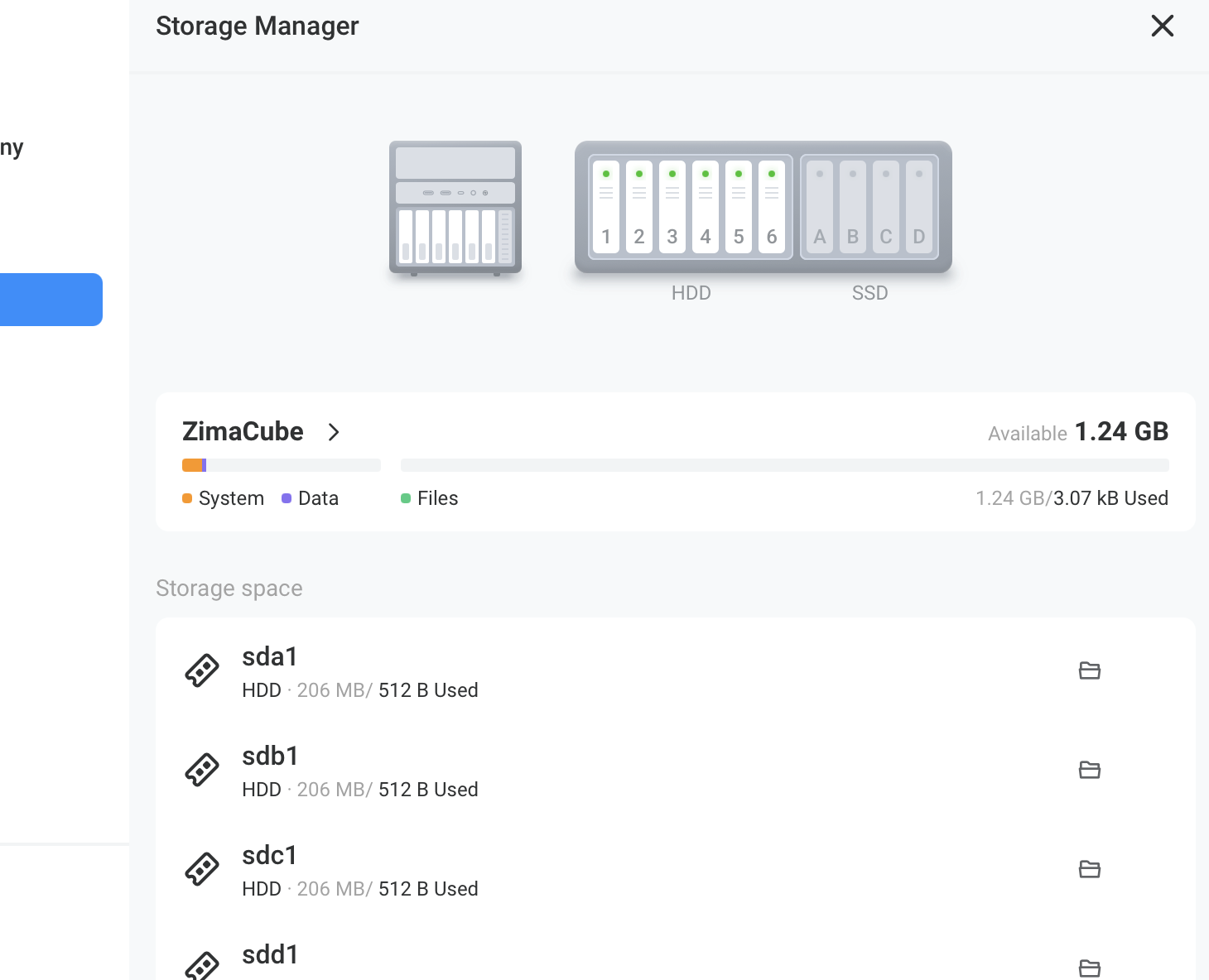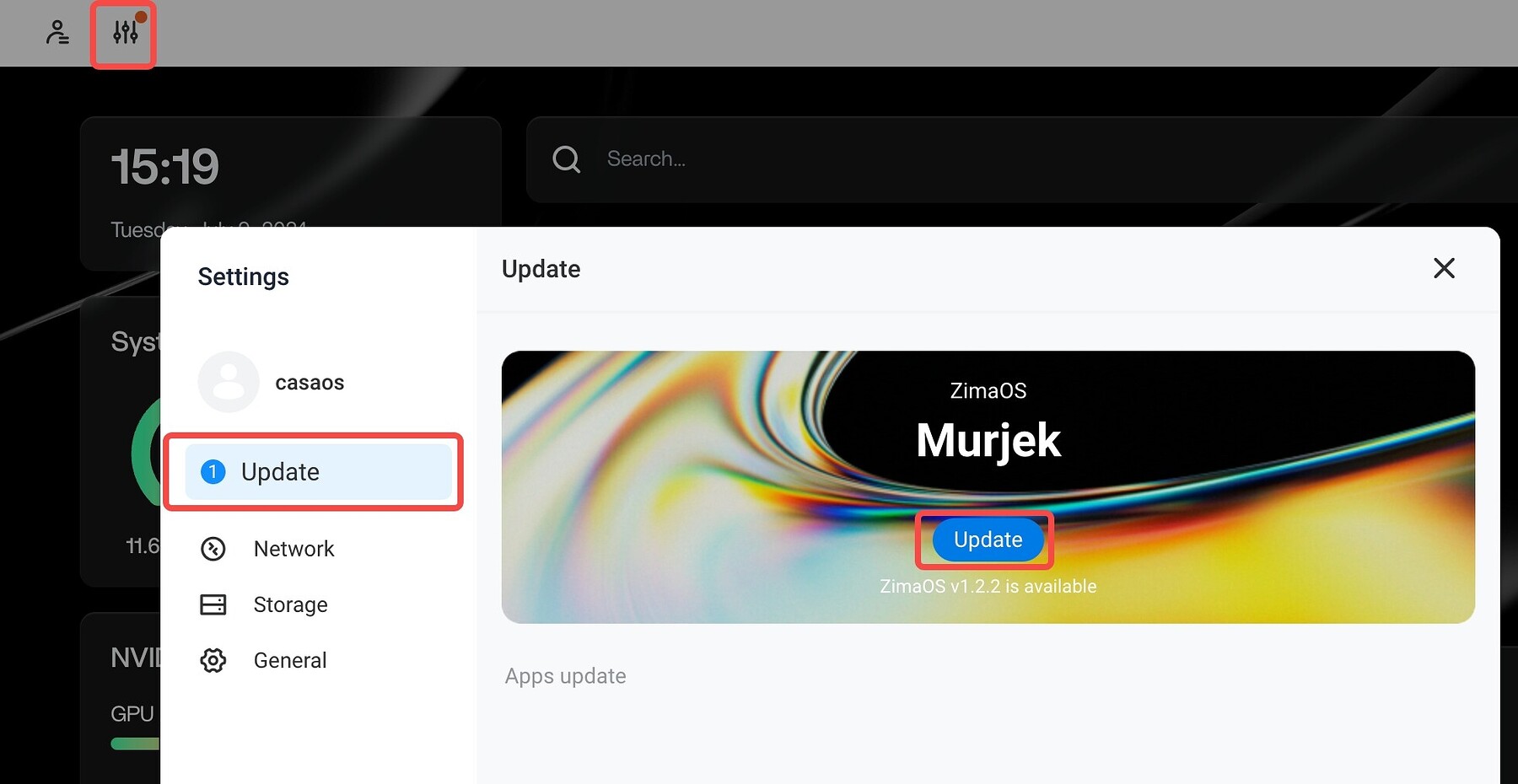How would I go about reconfiguring my harddrive storage, can’t figure out where that function is as I added each of the 6 drives separately and not what I wanted to do.
I once got the message that this feature is coming later.
I added new drives. But can’t add them to the existing RAID. Which is very annyoing, seems like at the moment you have to add all the storage you want. Then set it up as a RAID drive. Can’t add/remove storage.
Also no clear how the SSD will work - I’ve not yet received mine. It shouldn’t be part of storage - but used for caching. Anyone any idea?
a bit frustrating as I didn’t realize and formatted/setup them up one by one assuming I could merge so now have 6 separate 12TB drives
@JustDanny This happened to me and some comments from @timothy got me sorted. Take one of your drives out and reformat it with your MacOS or Windows box - anything but EXT format of Linux. Add the drive back in to your cube and this should bring back up the RAID dialog and then you can config all your drives to go into the RAID you wish to build.
This worked for ZimaOS 1.2.1 anyway. I have not tried it with 1.2.2. Make sure your cube is updated to anything > 1.2 so that your RAID persists between power cycles.
Pat
Thank you - helpful. Also happened to me. Once you press disable. You can’t ‘see’ the drive again.

this is the message. Now waiting.
Hi, Berthold,
The problem that a single disk cannot be disabled correctly has been fixed in ZimaOS v1.2.2. Under normal circumstances, you should be able to see a small red dot update notification in the upper left corner of the interface. If you do not see the small red dot, you can restart ZimaCube and confirm whether /Zima-HD/rauc/releases/v1.2.2 exists in Files app to confirm whether the updater is trying to download the latest version.
Hi, Berthold ,
The RAID expansion feature will be provided in ZimaOS v1.2.3 and is currently under testing.
Br,
Orca
Hi, Danny,
I think you can now disable all the drives (Should’ve backuped the existing data first) and create a RAID to get a tight-all storage.
Here’s a brief introduction to RAID 0, 1, and 5 for beginners:
RAID 0 (Striping):
- Purpose: Speed
- How it works: Data is split into blocks and spread across multiple disks.
- Benefits: Faster read and write speeds.
- Drawbacks: No data redundancy. If one disk fails, all data is lost.
RAID 1 (Mirroring):
- Purpose: Redundancy
- How it works: Data is duplicated on two or more disks.
- Benefits: High data redundancy. If one disk fails, data is still available on the other disk(s).
- Drawbacks: Storage capacity is halved since data is mirrored.
RAID 5 (Striping with Parity):
- Purpose: Balance of speed, redundancy, and capacity
- How it works: Data and parity (error-checking information) are spread across three or more disks.
- Benefits: Faster read speeds, data redundancy. RAID 5 can tolerate the failure of one disk without data loss.
- Drawbacks: Slower write speeds compared to RAID 0 due to parity calculations. Requires at least three disks.
These RAID configurations are used to improve performance and/or data protection depending on the specific needs.
BR,
Orca
I took the drives out connected to my MacBook and formatted as APFS and then back to EXFAT, before putting them back into the ZimaCube. Currently I get the following view. Wondering if there is a way to just factory reset the overall Zimacube as I haven’t done anything I can’t lose as my data is on my other external drive until I ensure stability in my configuration.

Does v1.2.3 have a beta distribution or production target date?
I would take them out and use Gparted to wipe them out completely. But don’t format them again. Put them back in the cube and format with the cube.
any suggested methods for use on an Apple MacBook Pro (non intel) to do this?
You can use sudo diskutil zeroDisk /dev/rdiskN on MacOSX as a equivalent to wipefs on Linux. If you want true secure erase then use: sudo diskutil [0-4] secureErase /dev/rdiskN
The security levels are:
0 - Single-pass zeros.
1 - Single-pass random numbers.
2 - US DoD 7-pass secure erase.
3 - Gutmann algorithm 35-pass secure erase.
4 - US DoE 3-pass secure erase.
According to the current progress, ZimaOS v1.2.3-beta1 is expected to be released on Friday this week. If there are any changes, please refer to the latest news. Thank you for your support and patience.
Was able to fully solve this after running the zeroDisk for each drive via my Mac then inserting all 6 back in the ZimaCube and created raid 5 group.
Look forward to ongoing ZimaOS updates.
I recieved an email from IceWhale last week that told me they are looking at using SSD’s for cacheing but it doesn’t make much difference at this point, so they are still exploring that.
They recommend that I move my large video files over the SSD drive for direct editing of video there If I want max speed for large, multi-source video editing.
I think what would be needed is to have a smart enough cache system that once it gets a call for a large video file, rather than pulling a few sectors at a time in a look ahead fashion, it would pull the whole stinkin’ file into SSD cache and leave it there while needed. (and any others called for) when editing video, it’s mostly read access, with the edit list being write access 95% of the time so that could be mirrored back to the hard drive/array in ml seconds every few seconds.
Thanks Bruce. Might give it a try and add 1 SSD. But I mostly use the Zima for backup. Not to actively work. In the ideal world, the Zima will then be switched off.
